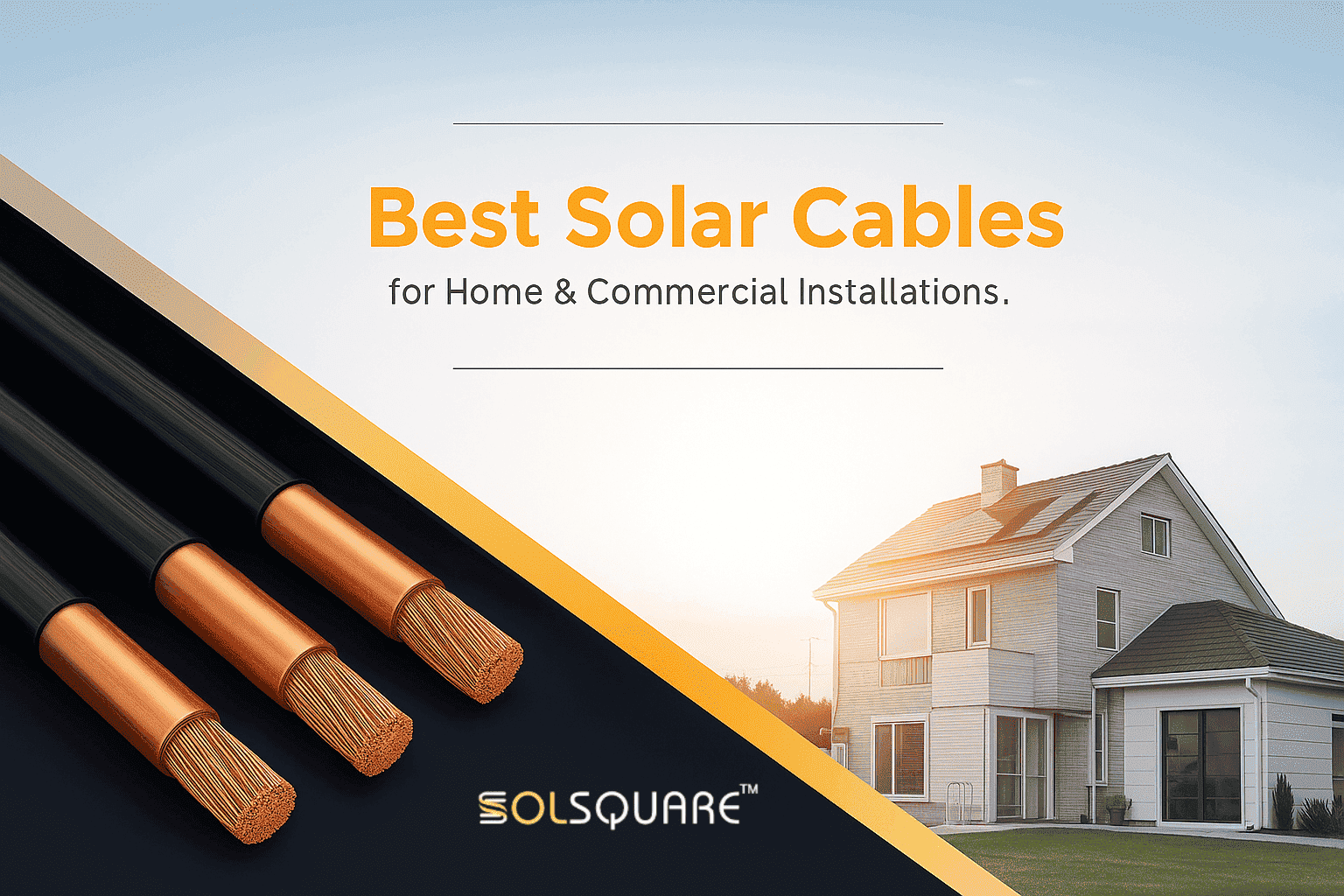Best Solar Cables for Home & Commercial Installations

Solar cables are one element that is frequently ignored as more people opt to use solar energy, both in their residential and commercial premises. Although the role of solar panels and inverters is usually a center stage, the cables are a very significant aspect in the efficient transmission of energy, safety, and durability. The selection of a proper solar cable may make or break your solar power system.
Through this article we will focus on the uniqueness of solar cables and the different types of solar cables available, features and how they are selected to fit in homes and commercial setups. We will also discuss most of the questions posed to enable you make an informed decision.
Why Are Solar Cables Important?
Any photovoltaic (PV) is dependent on solar cables. They also connect solar panels to inverters, charge controllers and batteries making sure that there is a smooth flow of energy. Contrary to the regular electrical wires, solar cables are purposely designed to last decades in extreme temperatures, UV rays, moisture, and other adverse outdoor conditions.
A poor-quality cable can lead to:
- Energy loss due to higher resistance
- Frequent breakdowns
- Fire hazards or system inefficiency
- Increased long-term costs
Another benefit of high quality solar cable is that it makes your system reliable to operate within a 25-30 years period in fluctuating weather conditions.
Read More Blogs
Key Features of High-Quality Solar Cables
- UV and Weather Resistant - Designed to be exposed to the sun, rain and humidity forever without deteriorating.
- Flame Resistant and Low Smoke - Reduce fire hazards and have safety advantages during overheating or short circuiting.
- Broad Temp Range -40°C to +120°C - Works in a very low and a very hot environment.
- Long Lifespan (30 Years) - Designed to be used over a long time outside.
- Flexible Copper Conductors – Made from tinned fine copper strands for better conductivity, corrosion resistance, and flexibility.
- Halogen-Free Insulation - The least damaging to the environment and will not emit toxic fumes during fire.
The features render them appropriate not just on rooftops but also industrial, farming and business solar schemes as well.
Types of Solar Cables
1. Single-Core Solar Cables
- Contain one conductor covered with insulation.
- A typical term used in solar PV systems to connect panels to inverters.
- Basic, robust and low cost.
Visit our Product Single-Core Solar Cables
2. Multi-Core Solar Cables
- Contain multiple conductors within a single sheath.
- Suitable for complex installations requiring multiple connections.
- Widely used in commercial setups where higher current capacity is needed.
Read More Blogs
3. Armoured Solar Cables
- Covered with a metal protection to give it more life.
- Perfect in underground cabling and severe conditions.
- Common in large commercial or industrial solar plants.
4. House Solar Wires (FR/FRLS-H/ZHFR)
- Used for domestic solar installations.
- Fire resistant and oil, abrasion, and chemical resistant.
- Give additional protection against electricity shocks and fire.
Factors to Consider When Choosing Solar Cables
- Conductor Material - Copper cables are better in terms of lower resistivity, flexibility and stability over long-term compared to aluminum.
- Cross-Section Size (mm²) - It defines the amount of current that can be safely carried by a cable. As an example, 4mm² cable can carry approximately 40 or more Amps and a 25mm² cable can bear over 140 Amps.
- Type of Insulation - XLPE (cross-linked polyethylene), or halogen-free flame-retardant is the safest insulation.
- Weather Resistance - One should make sure that the cable is UV, ozone and moisture resistant.
- Standards Compliance - Choose cables with international quality standards that comply with EN 50618, IEC 60228, IS 694 and IS 7098.
- Lifespan - Cables that are certified to perform over 25 to 30 years should be considered to align with the lifespan of your solar panels.
Best Solar Cables for Homes
For residential setups:
- 1.5mm² to 6mm² cross-section solar cables are generally sufficient.
- Look for flame-retardant, UV-resistant single-core copper cables.
- Flexible design allows easy rooftop installation.
Read More Blogs
Best Solar Cables for Commercial Installations
For businesses and large-scale solar farms:
- 10mm² to 300mm² copper or aluminum cables may be required, depending on load capacity.
- Armoured XLPE power cables are recommended for underground and high-capacity transmission.
- Multi-core design is superior in complicated installations that have increased power requirements.
Advantages of Using High-Quality Solar Cables
- Better efficiency - Less energy wastage and voltage drop.
- Safety - Flame retardant, halogen free and shock proof.
- Sturdiness - Able to resist rough climatic conditions and mechanical stress.
- Low Maintenance - They do not require replacing frequently when installed.
- Cost-Effectiveness - More expensive to purchase upfront, but cheaper to operate in the long term.
FAQs
Conclusion
In the case of solar energy systems, a proper investment in solar cables is equally as crucial as panel choice or inverter choice. At home, single-core and flexible copper cables are reliably and easily installed, whereas commercial applications use multi-core and armoured cable types which can endure heavy loads and severe environments.
As you may have a small rooftop system, or a big commercial venture, the selection of correct solar cables will ensure safety, durability and savings in the long run.